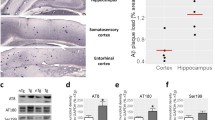Abstract
Alzheimer’s disease (AD) is a consequence of complex interactions of age-related neurodegeneration and vascular-associated pathologies, affecting more than 44 million people worldwide. For the last decade, it has been suggested that chronic brain hypoperfusion and consequent hypoxia play a direct role in the pathogenesis of AD. However, current treatments of AD have not focused on restoring or improving microvascular perfusion. In a previous study, we showed that drag reducing polymers (DRP) enhance cerebral blood flow and tissue oxygenation. We hypothesised that haemorheologic enhancement of cerebral perfusion by DRP would be useful for treating Alzheimer’s disease. We used double transgenic B6C3-Tg(APPswe, PSEN1dE9) 85Dbo/Mmjax AD mice. DRP or vehicle (saline) was i.v. injected every week starting at four months of age till 12 months of age (10 mice/group). In-vivo 2-photon laser scanning microscopy was used to evaluate amyloid plaques development, cerebral microcirculation, and tissue oxygen supply/metabolic status (NADH autofluorescence). The imaging sessions were repeated once a month till 12 months of age. Statistical analyses were done by independent Student’s t-test or Kolmogorov–Smirnov tests where appropriate. Differences between groups and time were determined using a two-way repeated measures ANOVA analysis for multiple comparisons and post hoc testing using the Mann-Whitney U test. In the vehicle group, numerous plaques completely formed in the cortex by nine months of age. The development of plaques accumulation was accompanied by cerebral microcirculation disturbances, reduction in tissue oxygen supply and metabolic impairment (NADH increase). DRP mitigated microcirculation and tissue oxygen supply reduction – microvascular perfusion was 29.5 ± 5%, and tissue oxygen supply was 22 ± 4% higher than in the vehicle group (p < 0.05). In the DRP group, amyloid plaques deposition was substantially less than in the vehicle group (p < 0.05). Thus, rheological enhancement of blood flow by DRP is associated with reduced rate of beta amyloid plaques deposition in AD mice.
Access this chapter
Tax calculation will be finalised at checkout
Purchases are for personal use only
Similar content being viewed by others
References
2021 Alzheimer’s disease facts and figures. Alzheimers Dement 17(3):327–406. (2021)
Wood JG, Mirra SS, Pollock NJ et al (1986) Neurofibrillary tangles of Alzheimer disease share antigenic determinants with the axonal microtubule-associated protein tau. Proc Natl Acad Sci U S A 83(11):4040–4043
Holmes C, Boche D, Wilkinson D et al (2008) Long-term effects of Abeta42 immunisation in Alzheimer’s disease: follow-up of a randomised, placebo-controlled phase I trial. Lancet 9 372(9634):216–223
Maarouf CL, Daugs ID, Kokjohn TA et al (2010) The biochemical aftermath of anti-amyloid immunotherapy. Mol Neurodegener 7(5):39
Gorelick PB et al (2011) Vascular contributions to cognitive impairment and dementia: a statement for healthcare professionals from the American Heart Association/American Stroke Association. Stroke 42(9):2672–2713
Hamel E (2015) Cerebral circulation: function and dysfunction in Alzheimer’s disease. J Cardiovasc Pharmacol 65(4):317–324
Maier FC, Wehrl HF, Schmid AM et al (2014) Longitudinal PET-MRI reveals β-amyloid deposition and rCBF dynamics and connects vascular amyloidosis to quantitative loss of perfusion. Nat Med 20(12):1485–1492
Vernooij MW, van der Lugt A, Ikram MA et al (2008) Total cerebral blood flow and total brain perfusion in the general population: the Rotterdam scan study. J Cereb Blood Flow Metab 28(2):412–419
Kalback W, Esh C, Castaño EM et al (2004) Atherosclerosis, vascular amyloidosis and brain hypoperfusion in the pathogenesis of sporadic Alzheimer’s disease. Neurol Res 26(5):525–539
Roher AE, Esh C, Rahman A et al (2004) Atherosclerosis of cerebral arteries in Alzheimer disease. Stroke 35(11 Suppl 1):2623–2627
Roher AE, Tyas SL, Maarouf CL et al (2011) Intracranial atherosclerosis as a contributing factor to Alzheimer's disease dementia. Alzheimers Dement 7(4):436–444
Kameneva MV (2012) Microrheological effects of drag-reducing polymers in vitro and in vivo. Int J Eng Sci 59:168–183
Bragin DE, Kameneva MV, Bragina OA et al (2016) Rheological effects of drag-reducing polymers improve cerebral blood flow and oxygenation after traumatic brain injury in rats. J Cereb Blood Flow Metab 37(3):762–775
Shih AY, Mateo C, Drew PJ et al (2012) A polished and reinforced thinned-skull window for long-term imaging of the mouse brain. J Vis Exp 7(61):3742
Kwan AC, Duff K, Gouras GK et al (2009) Optical visualization of Alzheimer’s pathology via multiphoton-excited intrinsic fluorescence and second harmonic generation. Opt Express 17(5):3679–3689
Wang D, Chen F, Han Z et al (2021) Relationship between amyloid-β deposition and blood-brain barrier dysfunction in Alzheimer’s disease. Front Cell Neurosci 19(15):695479
Acknowledgments
This work was supported by RF Governmental Grant 075-15-2022-1094, NIH 8P30GM103400 and R01NS112808.
Author information
Authors and Affiliations
Corresponding author
Editor information
Editors and Affiliations
Rights and permissions
Copyright information
© 2022 Springer Nature Switzerland AG
About this paper
Cite this paper
Bragina, O.A., Sillerud, L.O., Kameneva, M.V., Nemoto, E.M., Bragin, D.E. (2022). Haemorheologic Enhancement of Cerebral Perfusion Improves Oxygen Supply and Reduces Aβ Plaques Deposition in a Mouse Model of Alzheimer’s Disease. In: Scholkmann, F., LaManna, J., Wolf, U. (eds) Oxygen Transport to Tissue XLIII. Advances in Experimental Medicine and Biology, vol 1395. Springer, Cham. https://doi.org/10.1007/978-3-031-14190-4_54
Download citation
DOI: https://doi.org/10.1007/978-3-031-14190-4_54
Published:
Publisher Name: Springer, Cham
Print ISBN: 978-3-031-14189-8
Online ISBN: 978-3-031-14190-4
eBook Packages: Biomedical and Life SciencesBiomedical and Life Sciences (R0)




